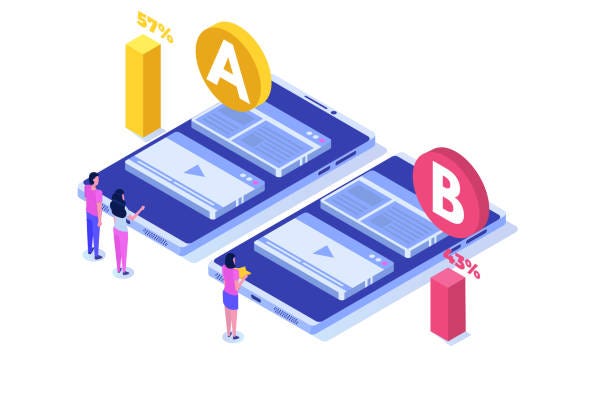How To Write Sales Copy That Gets High Conversions: Must Read It!
Read this comprehensive guide and begin your journey in sales copywriting instantly!

Introduction
Hey there! Ever wondered how some websites or ads convince you to buy something? That’s the magic of good sales copy! Today, we’re diving into the world of writing persuasive words that turn curious visitors into happy customers.
See, when you’re shopping online or even reading an advertisement, those words you see are carefully crafted to grab your attention and make you interested in what they’re offering.
That’s what we call “sales copy.” It’s like the friendly talk you have with a shopkeeper that makes you want to buy something.
So, in this guide, we’ll explore how to create sales copy that works. We’ll learn about understanding the people you’re trying to sell to, telling engaging stories, using simple and convincing language, and structuring the words in a way that makes people want to take action.
Imagine learning the secrets behind those catchy headlines that make you want to click or the stories that make you feel connected to a product. We’ll also discuss how to create a sense of urgency without feeling pressured and how to make it super easy for someone to buy what you’re selling.
Moreover, we’ll talk about testing your words to see what works best and how to keep improving them based on what people like. It’s all about making your words work smarter, not harder, to turn visitors into happy customers.
By the end of this journey, you’ll have a bunch of tools and ideas to write amazing sales copy that connects with people and gets them excited about what you’re offering. So, let’s get started on this fun adventure into the world of persuasive writing!
Understanding Your Audience
Hey, let’s talk about knowing the people you want to sell things to — your audience! It’s like making friends; you want to know what they like and what they need.
First off, your audience isn’t just a big group of random folks. They’re real people of different ages, where they live, what they like, and what they struggle with. Understanding these things helps you talk to them in a way that makes sense and feels friendly.

Think about it this way: if you’re selling skateboards, you’d want to talk to skateboard lovers, right? You’d want to know if they’re mostly young or maybe a bit older if they live in the city or the suburbs, and why they love skateboarding. This helps you write in a way that clicks with them — using their language and talking about stuff they care about.
Another thing is figuring out their problems or things they wish they had. Like, do they wish they had a faster way to learn skateboarding tricks? If you can offer something that helps with that, it’s like giving them a solution to a problem they care about.
To get all this info, you might need to do some snooping around — not in a creepy way, though! Look at what other people selling skateboards are doing. What do they say? How do they talk? It gives you hints about what works and what your audience might like.
Understanding your audience is like being a good friend who listens and knows what makes their pals happy. Once you get to know them better, you can chat with them in a way that feels like you’re helping out, not just selling something. That’s the secret sauce to winning them over.
Research and Analysis
Alright, let’s dive into the detective work of understanding what’s going on in the world of the things you want to sell. It’s like putting on your explorer hat and finding out cool stuff about the competition and the people you want to sell to.
First things first, let’s talk about checking out the market. That’s like peeking around to see what’s popular, what people are into, and how things are going in the world of the stuff you want to sell. Maybe there’s a new trend in skateboarding tricks or a fancy gadget everyone’s raving about. Knowing these things helps you stay in the loop.

Next up, let’s snoop a bit on what other folks who sell similar stuff are up to. It’s not about copying, but it’s about learning from others. See what they’re saying, how they’re saying it, and what seems to work.
Sometimes, you can get cool ideas or find gaps where you can shine with something new and awesome.
Remember, it’s not just about guessing what people might want; it’s about finding out for real. This means paying attention to what people are doing and saying. Maybe there are forums where skateboarders chat about their favorite boards, or social media groups where they share tricks. Hanging out in these places can give you a goldmine of info!
So, put on your detective hat, explore what’s happening out there, and take notes. The more you know about what’s going on in the skateboarding world and what people are looking for, the better you can talk to them in a way that feels like you’re speaking their language. That’s the trick to making your stuff stand out and become what everyone’s buzzing about!
Crafting Compelling Copy
Let’s get into the exciting world of creating words that grab attention and make people excited about what you’re offering! Think of it like being a storyteller or a friend sharing something awesome.
First off, think about the headlines — those catchy phrases at the top that make you want to read more. They’re like the front door to your story. You want them to be so interesting that people can’t resist clicking to find out more.
Now, let’s talk about storytelling. It’s not just about selling stuff; it’s about connecting with people. Ever heard a story that made you feel happy, sad, or excited? That’s the magic of storytelling! When you’re selling something, telling a good story about how it helps or why it’s cool can make a big difference.

Using simple words that everyone can understand is super important. You don’t want people scratching their heads trying to figure out what you’re saying. Keep it clear, friendly, and easy to read. Make it feel like a chat with a friend rather than a lecture.
Highlighting what’s special about what you’re selling is key. It’s like showing off the coolest features or the things that make your product or service different from the rest. Maybe your skateboard has a design that’s out of this world, or your skateboarding lessons are taught by a pro. Let people know what makes your stuff stand out.
So, when you’re writing, think about making headlines that catch attention, weaving stories that make people feel something, using simple words that everyone understands, and showcasing what makes your thing awesome. That’s how you get people excited and ready to take action!
Structuring Your Sales Copy
Alright, let’s talk about how to put your words together in a way that makes sense and gets folks interested in what you’re saying. Think of it like building a house — you want a strong foundation and rooms that flow nicely.
One way to structure your sales copy is by using something called the AIDA model. It’s like a roadmap for how you tell your story. First, you grab Attention — make people stop and notice what you’re saying. It could be with a catchy headline or something eye-catching.
Then, you move on to Interest — get them curious about what you’re offering. Share something exciting or useful that keeps them reading or listening. Maybe it’s a surprising fact or a cool benefit of your product or service.
After that, you create Desire — make them want what you’re selling. This is where you talk about how your thing solves their problem or makes their life better. Paint a picture of how awesome it would be to have it.
Finally, it’s all about Action — asking them to do something. It could be buying your product, signing up for your service, or even just clicking for more info. Make it super clear what you want them to do next.
Another thing to keep in mind is the difference between talking about the features of your product and the benefits for your customers. Features are like the cool things your product has, while benefits are how those cool things make your customers’ lives better. For instance, if you’re selling a skateboard, the feature might be its sturdy wheels, but the benefit is how it gives riders a smooth and enjoyable ride.

So, when you’re structuring your sales copy, think about using the AIDA model — grabbing Attention, building Interest, creating Desire, and prompting Action. Also, remember to highlight the benefits of your product or service to show people why they should be excited about it.
That’s the blueprint for crafting a compelling story that gets people interested and ready to take the next step!
Call-to-Action (CTA)
Let’s talk about that friendly nudge that guides people to take the next step after reading your words — the Call-to-Action, or CTA for short. It’s like saying, “Hey, let’s do this!” nicely and invitingly.
Your CTA is super important because it tells people what to do after they’ve learned about your awesome product or service. It could be as simple as saying, “Click here to buy now” or “Sign up for our newsletter.”
Making your CTA stand out is key. You want it to catch their eye, so they know exactly what action you want them to take.
Maybe you’ll use a button with a bright color or bold text that draws attention. The idea is to make it super easy for them to see and understand what to do next.
Creating a sense of urgency can also be helpful. It’s like saying, “Hey, don’t miss out on this amazing offer!” without being pushy. You could add phrases like “Limited time offer” or “Only a few left” to encourage them to act quickly.

Where you place your CTA matters too. You want it to be in a spot where it makes sense and feels natural. Whether it’s at the end of your sales copy or strategically placed throughout, make sure it’s easy to find.
Remember, your CTA should be clear, friendly, and inviting. It’s like guiding a friend towards something cool without being too forceful.
So, when crafting your CTA, make it stand out, create a bit of urgency, and place it where it makes sense. That way, people know exactly what action to take and feel good about doing it!
Testing and Optimization
Alright, let’s chat about the smart way to make your words even better — testing and optimization. It’s like trying out different flavors to find out which one everyone likes the most.
A/B testing is your buddy here. It’s not as fancy as it sounds; it just means testing two different versions of something to see which one works better. For instance, you might try two different headlines or two variations of your CTA button to see which gets more people clicking.
The cool thing about A/B testing is that it helps you figure out what people prefer. You’ll see which version gets more attention or prompts more action — like more clicks or sales. It’s like being a detective, gathering clues to find out what people like best.
Once you’ve gathered your test results, it’s time to put on your improvement hat. Look at the data and figure out what’s working and what’s not. Maybe people clicked more on the red button than the blue one, or they liked the headline with a question better. It’s all about learning from what you’ve tested.

But hey, testing doesn’t stop there. Keep testing and tweaking your words to make them even better. It’s like planting seeds, watering them, and watching them grow. You want your words to keep getting more and more effective.
Remember, the key is to keep an eye on the numbers and be open to making changes based on what you learn. It’s not about guessing; it’s about using data to make your words work their magic even better. So, test, learn, improve, and keep making your words shine brighter!
Conclusion
So, here we are at the end of our journey into the world of writing persuasive sales copy that gets people excited. Let’s wrap it up by revisiting the awesome tools and ideas we’ve explored.
Understanding your audience is like knowing your friends — the better you know them, the better you can talk to them. Knowing who you’re selling to helps you connect in a way that feels friendly and helpful.
Research and analysis are like being a curious explorer, discovering what’s hot and what people want. It’s like taking a peek at what others are doing to get a feel for what works.
Crafting compelling copy involves using catchy headlines, telling engaging stories, using simple words, and highlighting what makes your thing special. It’s about creating a chat, not a lecture.
Structuring your sales copy using the AIDA model helps you lead people from grabbing attention to taking action. Highlighting the benefits of your product or service is like painting a picture of why it’s awesome.
Your Call-to-Action (CTA) is the friendly push that guides people toward the next step. Make it clear, inviting, and easy to spot so they know what action to take.
Testing and optimization are your secret weapons for continuous improvement. It’s like trying out different things and using data to make your words even better, like fine-tuning a melody until it’s just right.
Remember, writing persuasive sales copy isn’t just about selling; it’s about connecting with people and offering something valuable. It’s about building relationships and making folks excited about what you have to offer.
So, armed with these tools and ideas, keep experimenting, keep learning, and keep refining your words. Keep making your sales copy a conversation that people love to engage with.
You’ve got this — go out there and create some magic with your words! Cheers to your success!
